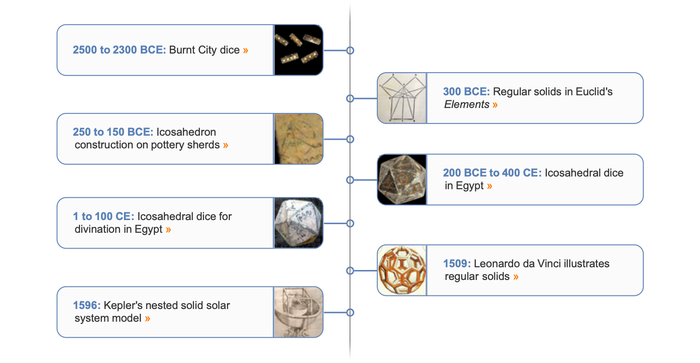Funding for this project generously provided by Overdeck Family Foundation
Polyhedra
A polyhedron is a three-dimensional solid that consists of a collection of polygons joined at their edges. The word derives from the Greek "poly-" ("many") plus the Indo-European "-hedron" ("seat"). Polyhedra form in the natural world in some crystals and have been of interest to many civilizations in art, architecture and games of chance.
-

around 2500–2300 BCE
Burnt City Dice
Ancient elongated dice from Shahr-e Sukhteh
-

around 250–150 BCE
Pottery Sherd Icosahedron Construction
Icosahedron construction on ancient pottery fragments
-

around 1–100 CE
Icosahedral Die with Divine Entities
Rolling divinities on an icosahedral die
-

around 200 BCE–400 CE
Serpentinite Icosahedral Die
Ancient Egyptian 20-sided die
-

1509
Da Vinci's Polyhedra
Divinely illustrated polyhedra
-

1596
Kepler's Planetary System
Nested regular solids model the solar system
Timeline
